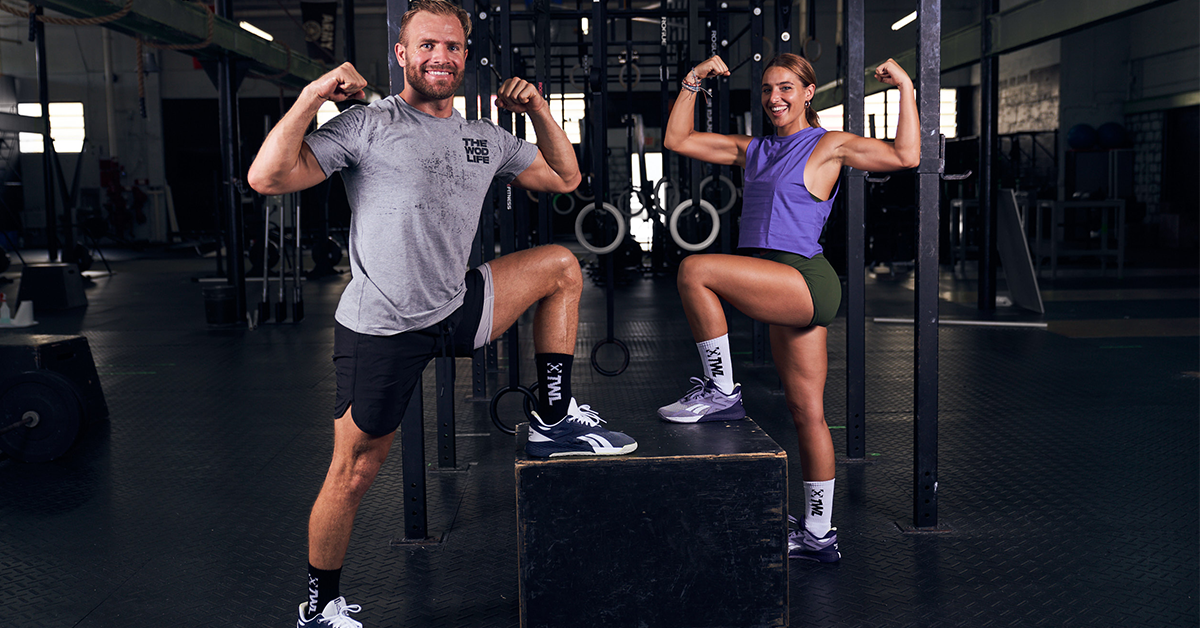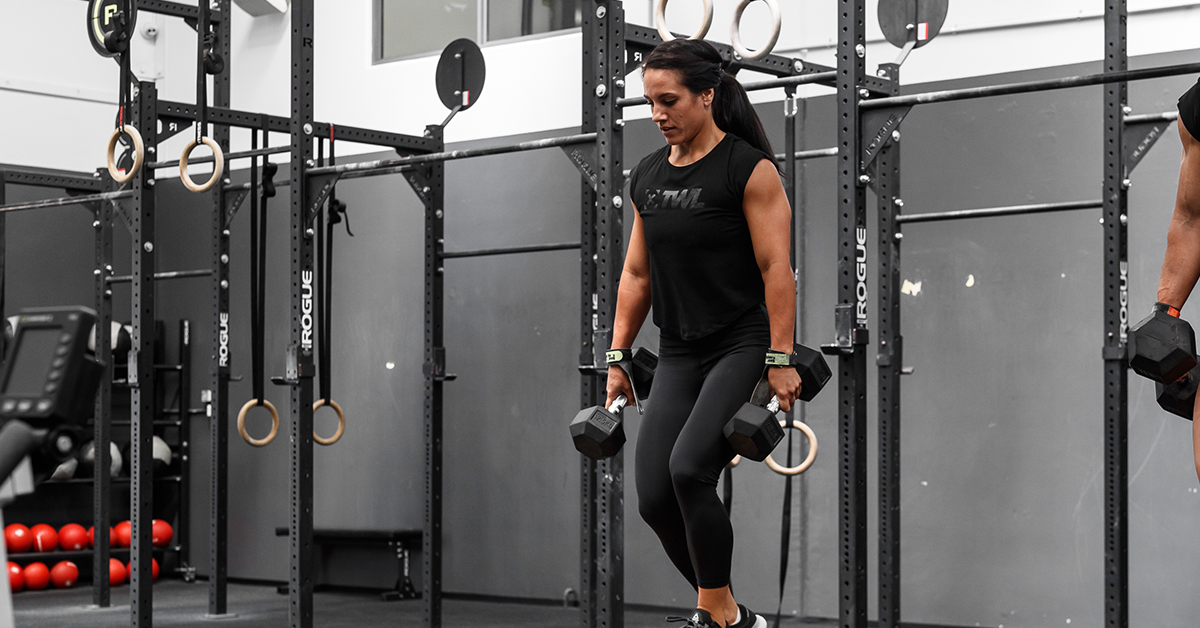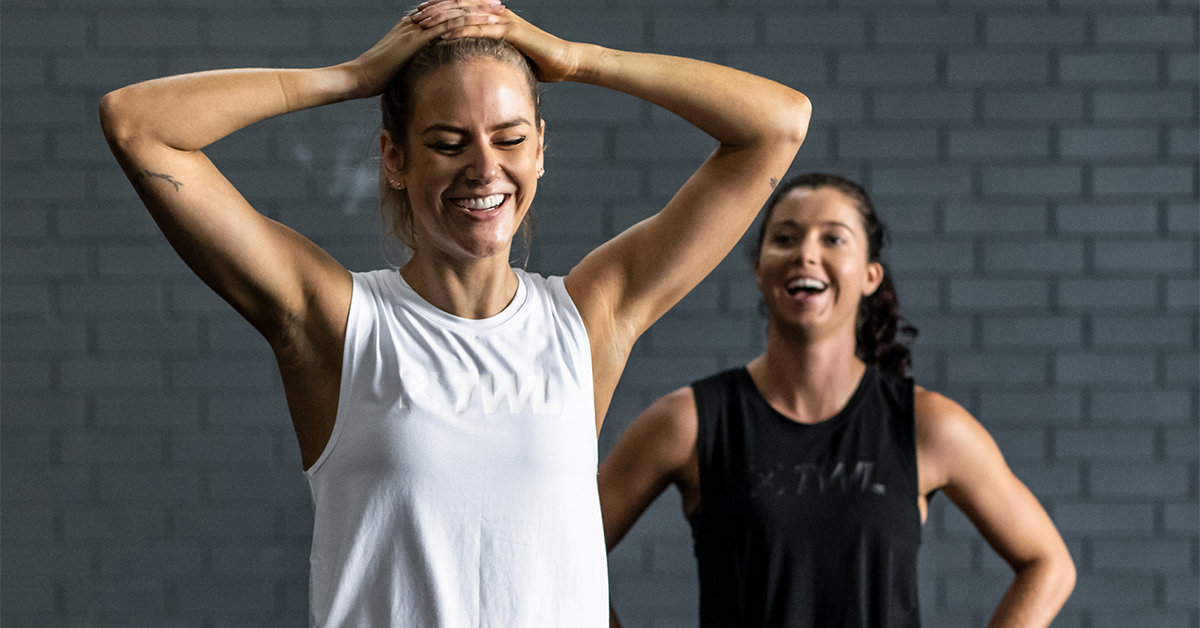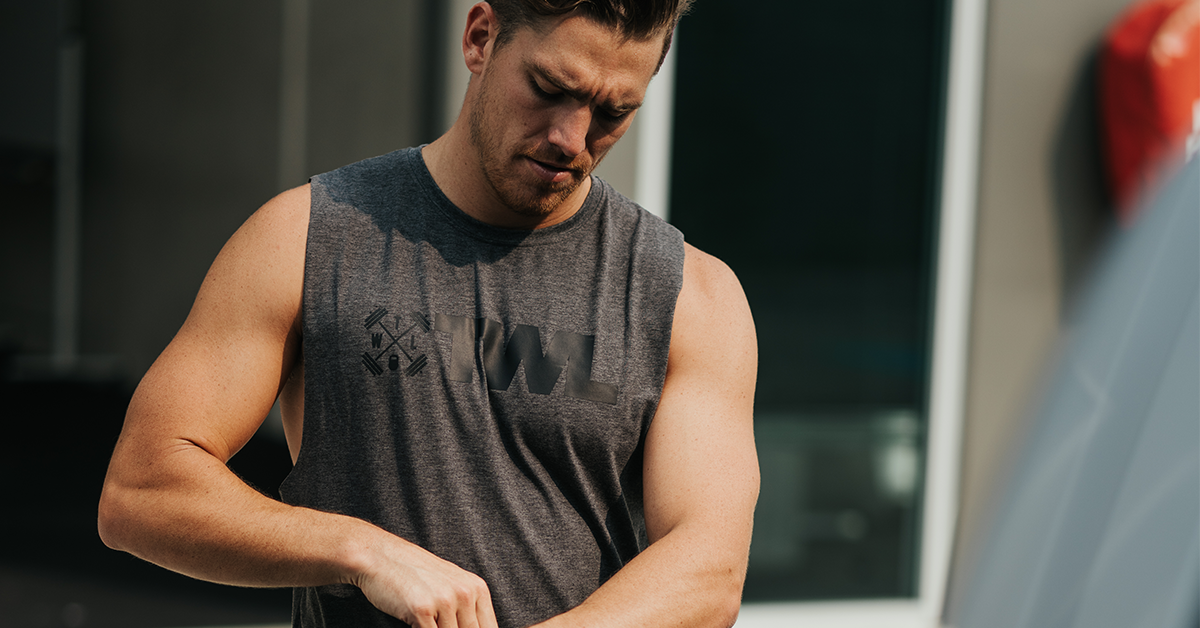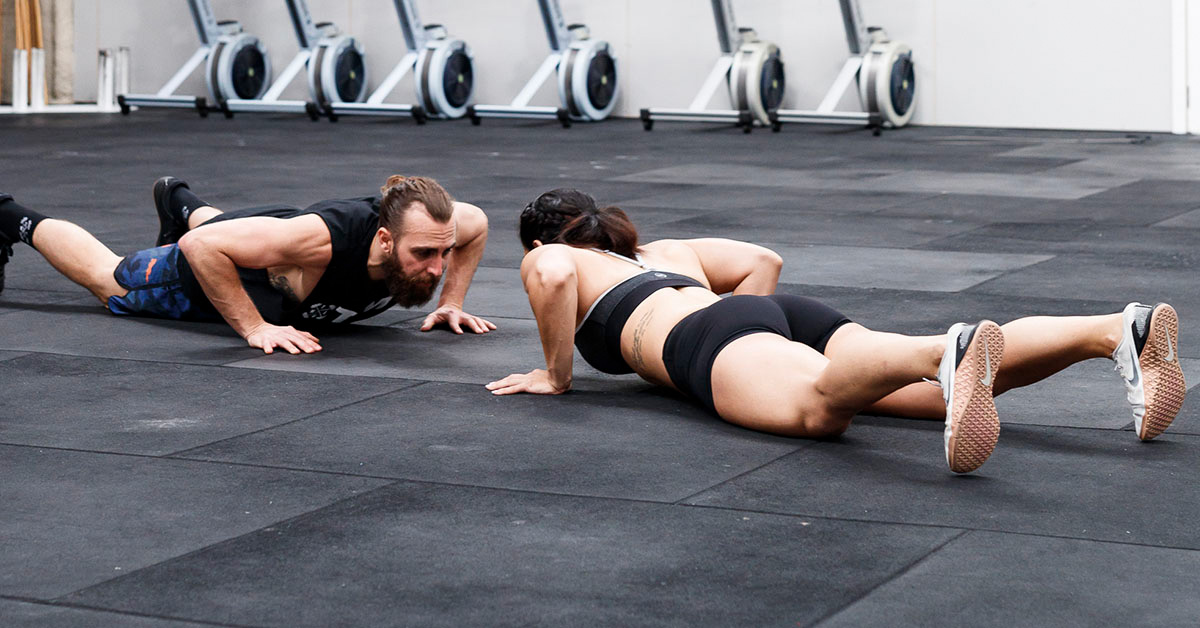The bench press is a staple in any athlete’s workout routine. One reason for its popularity, besides the health benefits, is that you can pick from a wide variety of ways you can do it. The dumbbell bench press — a close relative to the barbell bench press under the bench press family tree — is an excellent exercise that works well with comprehensive upper-body and strength-training programs. It targets the muscles of your upper body, including your arms, shoulders, and chest area.
While benching in general offers a number of benefits, working with two separate dumbbells is a unique approach. It’s no surprise why some athletes and lifters might prefer the dumbbell bench press vs. the barbell bench press. Dumbbell training packs a serious punch.
If you’ve been looking for some variety in your programming and want to keep the focus on your upper body, here’s how and why you should try the dumbbell bench press.
Psst! Need to stock up? Shop our selection of dumbbells.
Shop Now
How to Do the Dumbbell Bench Press
First, you need to get your weights ready. If you have someone around like a friend or a trainer, have them place the weights in your hands once you’re lying on the bench and skip to Step 4. If you’re going solo, keep on reading.
- Plant your feet firmly on the ground and sit comfortably on the bench. Grab the pair of dumbbells from the floor and carefully place them on each of your thighs.
- From your position, jerk one knee up and lift the dumbbell level with your chest. Repeat the same thing as you drive the other knee up.
- With both dumbbells level to your chest area, carefully lay back until your upper body is flat on the bench. Tip: Keep your back in a natural arch so that there’s a slight gap between the bench and your lower back. Doing so prevents unnecessary pressure on your rotator cuffs and allows your chest muscles to work harder. If you were benching a barbell, it’d be the same scenario.
- Once your back is on the bench, check if your feet are still firmly planted and actively press them into the floor. Doing so forces more muscles to engage during the lift.
- Engaging your core, press the dumbbells toward the ceiling. You should be looking up at the dumbbells, with your palms facing forward.
- Slowly lower the dumbbells down until your elbows are almost level with your back. Pull your shoulder blades towards each other as if you’re pinching them. This will help maintain your upper back stability. Tip: Don’t ruin your form in an attempt to lift heavier weights! Only lift as much as you can handle without contorting your body.
- Push the weights back up, and finish the movement at the top by squeezing your chest. This completes one rep.
Here’s what it looks like in action.
Benefits of Dumbbell Bench Press
When done right, the dumbbell bench press can work wonders for your health and body. Here are some reasons why you should include dumbbell bench presses in your strength training routine.
1. The Dumbbell Bench Press Allows Lifters a Full Range of Motion
When you use a barbell for bench presses, the bottom of your movement is limited by the part of the barbell called the shaft. Once the shaft comes in contact with your chest area, you won’t be able to lower your elbows any further. The dumbbell bench press fixes that problem by allowing your shoulders and elbows more room for movement.
Additionally, dumbbells allow you to assume a more natural grip, giving your wrists and elbows a little flexibility that is impossible with the barbell. This is important for those who’ve had shoulder problems in the past and may have troubles with lifting using the barbell.
By the way, if benching bothers your joints, wrist wraps might help.
Shop Now
2. Dumbbell Bench Pressing Reduces the Chances of Muscular Imbalance
Unless you’re ambidextrous and happen to know how to alternate the use of two hands evenly, muscular imbalances are something that happens to almost all of us. When performing movements with the barbell, it’s normal for one side of your body to shoulder more of the work.
Bench pressing with dumbbells eliminates the risk of muscle imbalance by making both limbs and arms work independently. This will bridge the differences in strength and tenacity between your dominant and non-dominant sides. The next time you try bench pressing using a barbell, you won’t have to worry about one side doing more of the work.
3. The Dumbbell Bench Press is Safer to Perform Alone
Contrary to barbell bench presses, once your arms and chest are ready to tap out, you can drop the weights at any moment and fail relatively safely with dumbbell bench pressing.
For those who are used to working out on their own and don’t have the option of a spotter, dumbbells are where it’s at.
4. Dumbbell Bench Presses Put Your Core to Work
Besides the increased strength and development of muscle mass in your chest, shoulders, and triceps, one additional perk of the dumbbell bench press is that it works your core like no other.
Try performing the routine with only one dumbbell at a time. This significantly puts your anti-rotational strength to the test. Having the other dumbbell in the air while your non-working hand isn’t holding anything, the weight and movement will force your core to counteract. This makes dumbbell bench presses another great core strengthening movement to add to your routine.
Love training with dumbbells? Read our blog on eight dumbbell WODs we think you’ll love.

